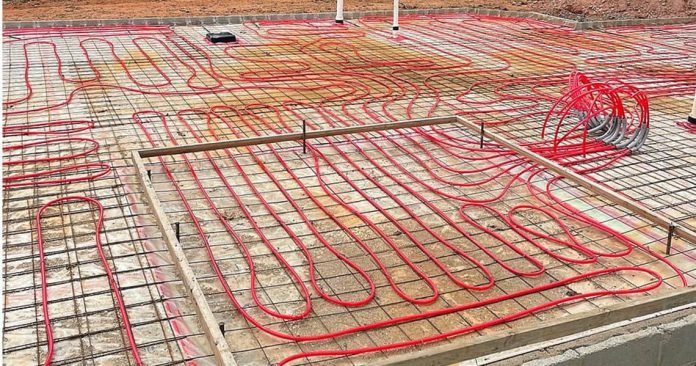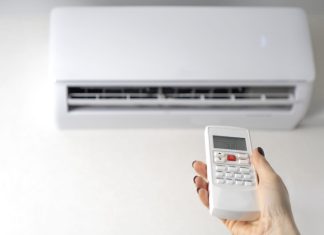Radiant floor heating distributes heat via the floor of the property. The mechanism works by the immediate heat transfer from the surface to both individuals and objects through infrared radiation. In comparison with conventional heating systems, underfloor heating offers greater effectiveness and comfort in delivering heat and enhancing the quality of air inside the house.
There are two types of radiant floor heating systems:
- Electric radiant floor heating uses electrical resistance cables or mats installed beneath the flooring, which are then heated to warm the room.
- Hydronic radiant floor heating involves circulating hot water through a network of tubes embedded in the floor.
Read on to find out more about them.
- Set-up procedure
This installation technique doesn’t rely on the category of the medium used, because both electric and hydronic underfloor heating can use both of these approaches.
- Wet construction
Hydronic piping or electrical matting is installed on a large floor made of concrete. which takes a longer time to heat up, but the high thermal of concrete can maintain the warmth to last longer even after the heating system is switched off. This method, while effective, tends to be more expensive due to the materials and extended installation time involved.
2. Dry set-up
This procedure is more practical and cost-effective, as the wires, matting, or pipework are installed directly beneath the floor, allowing for quick heat distribution throughout the room. However, it requires higher operating temperatures to achieve optimal performance.
- Primary components of radiant floor heating
- Manifold: it divides the water supply from the boiler into multiple pipe circuits, distributing it through different areas of the floor.
- Thermostat: Allows the user to set and control the desired temperature.
- Control Pack: Lets the user set their preferences, with the heater adjusting its operation accordingly.
- Transmitter Valves: Regulate the flow of water within the system.
- Actuator Fittings: Connect various pipelines and components within the system.
- Advantages of use
Radiant floor heating is recognised as highly beneficial by many homeowners, because it offers many advantages, such as:
- Ease of Control: Allows for precise adjustment of the warmth level to suit individual preferences and comfort.
- Improved Energy Efficiency: Requires lower energy usage compared to traditional heating systems,
- Even Heat Distribution: Provides consistent warmth across the floor, eliminating cold spots.
- Silent Operation: Functions quietly without the noise associated with forced-air systems.
- Natural Air Circulation: Promotes gentle heat distribution without creating drafts.
- Reduced Dust and Allergens: Minimises air movement, helping to reduce the spread of dust and allergens for better indoor air quality.
- Enhanced Property Value: Adds value to a home by offering a modern and efficient heating solution.
- Increased Interior Space: Frees up wall and floor space by eliminating the need for bulky ducts and vents.
Now that you have a better understanding of underfloor heating, consider consulting with an expert from a local radiant heating company to find the best solution for your property. They can assist you in choosing between a hydronic and electric system and provide professional installation to ensure optimal performance in your home.














